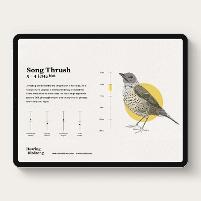Over the course of conducting design research into the needs of an ageing society, I have inevitably been involved in a number of studies that address sight and hearing loss. These projects have varied in scale and approach, but one inescapable thing has always struck me.
The apparatus that corrects sight impairment (wearing spectacles) has been long been elevated to the realms of fashion and lifestyle whereas the apparatus that corrects hearing loss (wearing a hearing aid) has remained resolutely stuck in the world of stigmatising medical devices. Why is this the case?
What is it about the ear that makes it less socially acceptable to augment with a device as you age, whereas plonking an expensive designer frame on the end of your nose is simply part of your wardrobe? Designers have tried every way possible to make the hearing aid more fashionable – as chic as jewellery, as miniature as feasible – but to little lasting effect.
It is instructive that some companies have now resorted to incorporating hearing aids into the frames of eyewear. The battle for social acceptability waged since the advent of the hearing trumpet in the 17th century appears to be lost. Perhaps the more recent tactic of apologetic disguise adopted by the hearing world was misguided compared to the fashionable flaunt-it approach of spectacle wearers.
The differences are even apparent in how older people are tested for sound and vision. The eye test in a high street optician may be super-professional with some state-of-the-art kit, but it is merely a short, necessary prelude to spending extended time in the retail bazaar debating which frames suit best. Paul Smith or Tommy Hilfiger? A date with the audiologist, on the other hand, is often a cold, clinical, behind-closed-doors affair which our own research has revealed to be an alienating experience for those struggling with hearing loss.
All of which leads me to some good news for the hearing community: a genius innovation in measuring hearing loss that breaks that coldly scientific mould. It is the work of designer Tom Woods of architectural practice Kennedy Woods, who readily acknowledges that having your hearing checked has a very different set of associations to having your eyesight examined.
Woods has created an immersive hearing test app which uses the sound of birdsong to give users an indication of their hearing health by connecting them to the natural environment. Woods was inspired by a teacher, Angela Quilley, who gradually lost the sound of birdsong during her daily walks. He took five different birdsongs and digitally adapted them to create familiar soundscapes with rustling wind and water effects. The solution is lyrical, calm and human-centred, encouraging people to seek help from a healthcare professional.
The Hearing Birdsong app is one of several innovations currently in development as part of the Design Age Institute’s pathfinder programme to develop new designs for healthier ageing – the Oxford Institute of Population Ageing is a key partner in the Institute’s work.
Woods’ concept has been on show over the summer at the Design Museum in London as part of display curated by the Design Age Institute. The display is entitled ‘The Future of Ageing’. With innovations like Hearing Birdsong, can those with hearing loss perhaps look forward to a brighter future with a human touch? We’d like to think so.
Jeremy Myerson is Professor Emeritus in the Helen Hamlyn Centre for Design, Royal College of Art, and an Honorary Professorial Fellow at the Oxford Institute of Population Ageing. He sits on the advisory board of the RCA’s Design Age Institute.
Opinions of the blogger is their own and not endorsed by the Institute
Comments Welcome: We welcome your comments on this or any of the Institute's blog posts. Please feel free to email comments to be posted on your behalf to administrator@ageing.ox.ac.uk or use the Disqus facility linked below.













